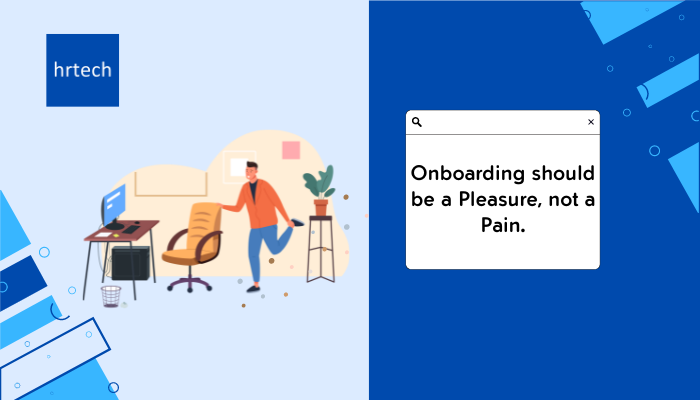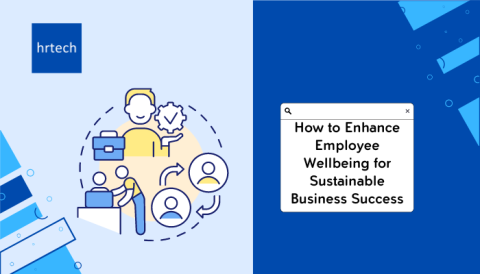Onboarding is a critical weakness for a majority of organizations that stalls new hire momentum. A poor onboarding experience threatens to disengage enthusiastic employees during their crucial first weeks on the job

“I truly believe that onboarding is an art. Each new employee brings with them a potential to achieve and succeed. To lose the energy of a new hire through poor onboarding is an opportunity lost.”
- Sarah Wetzel - HR Consultant at Barrett Business Services, Inc. (Nasdaq: BBSI)
From childhood, I’ve been personally haunted by physical forms. Small boxes, short dashes and bad handwriting, well you get the idea! When we at Heptagon took up the challenge to revolutionize the human resource onboarding experience, I couldn’t have been happier. And below are our 2 cents about why Onboarding is the most important experience that an employee deserves and how we’ve gone about to make it as pleasurable as possible.
As a company grows, the need for human capital mounts as well. It’s the job of a HR talent acquisition manager to keep the supply of human capital in place to meet the rising demands of a fast-growing company. A talent acquisition specialist starts searching for the right candidates across various platforms. Then sets up a seamless recruitment flow, incentivizes the candidate rightly and rolls out offer letters to the right candidate.
However, in the maddening rush to keep the stock of talents in place, the HR team often gets blurred out on analyzing the leaks or exits. The exits and leaks are people leaving the company sometimes even before orientation or within a short span of time of joining.
According to a research done on an employee onboarding survey of over 1000 employed US workers, 31 percent of people have left a job within the first six months, with 68 percent of those departing within three months. For many such employees, the reason being a poor onboarding experience.
Onboarding is a critical weakness for a majority of organizations that stalls new hire momentum. A poor onboarding experience threatens to disengage enthusiastic employees during their crucial first weeks on the job. Let’s have a look at some of the main causes of this poor onboarding experience.
1. Monotonous form fillings
The tiresome process of filling up repetitive forms makes the process of onboarding boring and mundane, causing the candidate to lose interest in the process.
2. Rudimentary document collection, storage, and retrieval
The document collection process is still rudimentary. Most companies still ask the employees to submit hard copies of all the supporting documents. Some have moved on to digital ways by asking new hires to send emails. This process causes a lot more problems with regard to storage and retrieval of these documents for the HR teams.
3. Unprofessional Engagement System.
Most new hires have a “notice period” of 1 – 3 months before their joining date. During this phase, it’s up to the sole discretion of the HR teams to be in touch with the new hire. This engagement is mostly ad-hoc and sometimes gets on the nerves of the new-hires.
4. Improper Feedback system
Most companies give out a feedback form on the date of joining which typically is just a formality. People love to be heard at the right time and not having a mechanism to capture that seamlessly irates the new hires
An ideal onboarding experience platform should provide a hassle-free onboarding experience across platforms at the employee’s convenience. Some features of an ideal onboarding experience platform are:
1. Auto-Form Generation:
More than 75% of the form fields are repetitive. The onboarding platform through its dynamic form generation algorithm should automatically fill in and generate the forms. A candidate needs to fill in the data just once, which is then automatically filled onto the other forms.
2. Intelligent Document Collection & Storage
The onboarding platform should let the candidate capture Documents and Photos real time through their mobile phones which in turn will be intelligently stored and tagged to a particular new hire thus making the retrieval easy.
3. Professional Engagement
The onboarding platform should educate, inform and engage the new hires. The platform should help new-hires get all the company and team specific news, within the application, thus, making the new hires feel part of your company even before their Date of Joining.
4. Strategic Feedback System
We all want to be heard by the right people at the right time. The onboarding platform should collect digital feedback across strategic touchpoints which makes the onboarding process complete and acting on such feedbacks makes our onboarding better over time.
We have kept all these things in mind while building the onboarding experience platform, Digidesk, The Leading Onboarding Experience Platform.
About the author :

Vijayramkumar Veeraraghavan (Vijay) is the Co-Founder and Chief Executive Officer of Heptagon. At Heptagon, he takes care of business development, investor relations and the overall growth of the company. His passion includes rolling out innovative digital solutions that usher in transformative real-world business impact to clients. He started his career at Crisil’s Global Analytical Centre where he had the opportunity to work closely with Standard & Poor’s handling asset and mortgage backed securities. In 2010, the smartphone revolution captured his imagination and he stepped into MyCityWay India to handle its strategic partnerships. During his stint at Hubbl, he was primarily involved in advertiser/publisher relations and strategic partnerships. He also, closely worked with the data science team to churn out relevant audience data and promote Hubbl’s proprietary Hyper Targeting Algorithm to advertisers and publishers.





